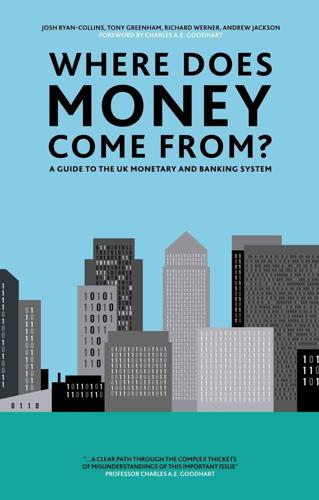
Where Does Money Come From?: A Guide to the UK Monetary & Banking System
by
Josh Ryan-Collins
,
Tony Greenham
,
Richard Werner
and
Andrew Jackson
Published 14 Apr 2012
For your £500, as we have seen, the bank will only hold a small proportion of central bank reserves. Like goldsmiths before them, banks know that at any one time not many customers are likely to demand all of their money in cash. The banks also know that within the closed loop of the Real Time Gross Settlement (RTGS), see Box 9, as well as payments and central bank reserves leaving them, a similar volume will be coming back to them. Box 9: Real time gross settlement (RTGS) Forty-six banks currently have reserve accounts with the Bank of England.18 Around £780 billion of transfers are made on average each day between these reserve accounts19. With all 46 reserve accounts, there are a total of 2,070 different payment flows in both directions between the accounts (money can be transferred from each individual bank to every other bank).* Rather than each bank having to deal with 45 other banks in order to make payments between them, they can simply send payment instructions to the Bank of England’s RTGS (real time gross settlement) processor.
…
Other payment versus payment settlement methods Index LIST OF EXPLANATORY BOXES Box 1: Retail, commercial, wholesale and investment bank Box 2: Building societies, credit unions and money creation Box 3: Bonds, securities and gilts Box 4: Wholesale money markets Box 5: Double-entry bookkeeping and T-accounts Box 6: Money as information – electronic money in the Bank of England Box 7: What is LIBOR and how does it relate to the Bank of England policy rate? Box 8: Seigniorage, cash and bank’s ‘special profits’ Box 9: Real time gross settlement (RTGS) Box 10: If banks can create money, how do they go bust? Explaining insolvency and illiquidity Box 11: The ‘shadow banking’ system Box 12: The Quantity Theory of Credit Box 13: Could the Government directly create money itself? Appendices Box A1: Market-makers Box A2: Foreign Exchange instruments LIST OF FIGURES, CHARTS AND GRAPHS Figure 1: Banks as financial intermediaries Figure 2: The money multiplier model Figure 3: The money multiplier pyramid Figure 4: ‘Balloon’ of commercial bank money Figure 5: Growth rate of commercial bank lending excluding securitisations 2000-12 Figure 6: Change in stock of central bank reserves, 2000-12 Figure 7: UK money supply, 1963-2011: Broad money (M4) and Base money Figure 8: Decline in UK liquidity reserve ratios Figure 9: Indices of broad money (M4) and GDP, 1970-2011 Figure 10: Liquidity scale Figure 11: Commercial banks and central bank reserve account with an example payment Figure 12: Payment of £500 from Richard to Landlord Figure 13: Simplified diagram of intra-day clearing and overnight trading of central bank reserves between six commercial banks Figure 14: Open market operations by the Bank of England Figure 15: Balance sheet for commercial bank including capital Figure 16: Bank of England balance sheet as a percentage of GPD Figure 17: Net lending by UK banks by sector, 1997-2010 sterling millions Figure 18: Change in lending to small and medium-sized enterprises, 2004-12 Figure 19: Government taxation and spending Figure 20: Government borrowing and spending (no net impact on the money supply) Figure 21: A foreign exchange transfer of $1.5m Figure 22: The impossible trinity Appendix Figure A1: Corridor system of reserves Figure A2: The floor system of reserves Figure A3: The exchequer pyramid – key bodies and relationships involved in government accounts Figure A4: The UK debt management account, 2011-12 Figure A5: Assets and liabilities of the exchange equalisation account 2011-12 Figure A6: Amount of foreign currency settled per day by settlement method (2006) Figure A7: Foreign exchange using correspondent banking Figure A8: CLS (in full) Bank operational timeline LIST OF T-CHARTS T-chart 1: Loan by Barclays Bank T-chart 2: Bank simultaneously creates a loan (asset) and a deposit (liability) T-chart 3: Balance sheet of private banks and central bank showing reserves T-chart 4: Private banks’ balance sheets T-chart 5: Private and central bank reserves T-chart 6: withdrawal of£10 T-chart 7: QE on central bank balance sheet T-chart 8: QE on pension fund balance sheet T-chart 9: QE on asset purchase facility (APF) balance sheet T-chart 10: QE on commercial bank balance sheet Foreword Far from money being ‘the root of all evil’, our economic system cannot cope without it.
…
With all 46 reserve accounts, there are a total of 2,070 different payment flows in both directions between the accounts (money can be transferred from each individual bank to every other bank).* Rather than each bank having to deal with 45 other banks in order to make payments between them, they can simply send payment instructions to the Bank of England’s RTGS (real time gross settlement) processor. Established in 1996, the RTGS is a computer system that stores the balance of each bank’s reserve account and the transactions going to and from each reserve account. The RTGS processor handles transfers of money by reducing the balance of the paying bank’s reserve account, and increasing the balance of the receiving bank’s reserve account.
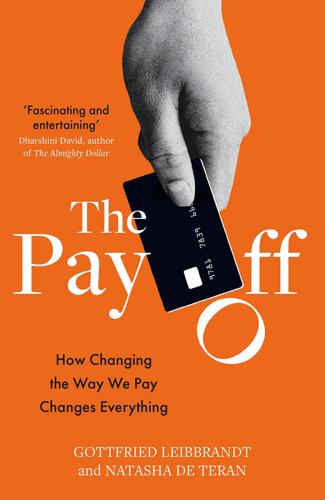
The Pay Off: How Changing the Way We Pay Changes Everything
by
Gottfried Leibbrandt
and
Natasha de Teran
Published 14 Jul 2021
Netting, as we saw in the previous chapter, is most definitely not the answer to the problem of moving such large amounts. What you really need if you want to move a trillion is a system that settles large-value payments between banks one-by-one and in real time; and one in which these payments are ‘final’ and cannot be rolled back. The solution the central banks reached was the real-time gross settlement (RTGS) system. You can think about RTGSs as playing the same role as the $100 bill passed round the small island in the story in Chapter 1 – albeit on a significantly larger scale. They allow all mutual debts between banks (in a country or currency) to be settled immediately instead of accumulating like dry tinder waiting for a spark.
…
‘On the global retreat of correspondent banks’, BIS Quarterly Review, March, 37–52; www.fsb.org/2018/11/fsb-correspondent-banking-data-report-update-2/ Epilogue For the cap imposed on UPI transactions processed by third-party providers in India, see: https://www.npci.org.in/PDF/npci/press-releases/2020/UPI-balances-consumer-experience-with-growth-for-TPAPs.pdf Index 9/11 terrorist attacks 66–7, 130–1, 232–3 5G networks 235, 251 A Aadhaar national identity numbers 83 ABLV Bank 260–1 ABN AMRO 108 abolition of cash 31–2, 33–4 account information service provider (AISP) 181 acquirers 56, 162–7 Adalberth, Niklas 174 advertising, targeted 179 Adyen 163, 165, 216, 241, 269 Africa 38, 78, 213, 258 aggregators, payment 162 air miles 219 Albania 32 algorithms and card fraud 109–10 aliases, use of 82, 83, 215 Alibaba 76, 271–27 Alipay 70, 73, 75, 76, 77, 78–9, 85, 100, 178–9, 206, 216, 217, 220, 221, 222, 229, 235, 271 Allied Irish Banks 165 Alphaville blog 129 Amazon 90, 148, 171–2, 175, 180, 182, 269, 271 Amazon Go shops 169 Amazon Pay 172, 184 American Airlines 219 American Express (Amex) 40–1, 47, 174 Android apps 225, 271 Android smartphones 270 Angolan embassy, Washington DC 266–7 anonymous bank accounts 66 Ant Group 70, 76, 178–9, 229, 271–2 anti-money-laundering regulations 27, 28, 144, 145, 266 Apple 147, 171, 223–5 Apple app store 224–5, 270–1 Apple Pay 18–19, 52, 53, 184, 225 application programming interfaces (APIs) 83–4, 164, 181, 182, 184, 217, 218, 270 apps, payment 73–9, 84, 155, 175, 177, 178, 185, 229 see also Alipay; Tenpay Argentina 24–5 arms deals, illegal 64–5 Asia 37, 100, 101, 258 Assange, Julian 3 ATMs 3, 23 cards 49, 53 costs of running 33 costs to customers 36, 90, 93–4, 238 cross-border payments 58–9, 138, 238 decline of use 76 networks 57, 220–2, 223 Puerto Rico 36–7 theft from 108 withdrawal limits 82 auctioneers 203 Australia 83 ‘Big Four’ banks 223–4 Austria 28, 67, 111 automated clearing houses (ACHs) 119 B BACS (Bankers Automated Clearing System) 81, 119 BaFin 167 Balkans 25 Ball, George W. 55 Banco Bilbao Vizcaya Argentaria (BBVA) 159 Banco Delta Asia 249–50 Banco Nacional de Cuba 150, 211 Bangladesh Bank 112–14, 233, 270 Bank for International Settlements (BIS) 120, 135, 268 Bank of America 41, 45–6, 56, 150, 221, 260 Bank of Credit and Commerce International (BCCI) 255, 263–4 Bank of England 12, 117, 126, 233, 264 Bank of New York 133 BankAmericard 41–2, 45–6, 221 Bankia ‘black cards’ 261–2 banks 6, 7, 11, 12–14, 28, 33, 272–3 account numbers 64–5 clearing systems 117–19, 122, 239–40 collapses 122, 123, 247 correspondent banking 138–42, 143, 144–5, 146–8, 223, 248, 267–8 early geographic clusters 117–18 exclusion from services 265–8 financial crime 258–64, 265 fines 258–60, 270 growth in China 77 JPM Coin 206–9 Letters of Credit 149–50 negative interest rates 212 netting systems 122–3 open banking 182–3 paying to pay 101–4 private ownership of Visa and Mastercard 56 real-time gross settlement (RTGS) 126–30, 240 regulation 14, 135, 156, 179–80, 181, 183, 212–13, 217, 230–6, 237–42, 265, 267, 268, 273 reserves 17, 34 revenue 89, 91, 95, 98, 99, 100–1, 102–3, 237–9, 241, 242 robbery 107–8, 112–16 threat of instant payment systems 81, 82, 217 use of payment data 179–80 Barclays Bank 65–6 Barnes & Noble 171 barter 8 Bay of Pigs fiasco 149–50 BBC 128 Belgacom 234 Belgium 111, 234, 244, 260 Benelux countries 67 Better than Cash Alliance (BTCA) 31 Bibit 165 BIC (Business Identifier Codes) 142 BigTech 147, 183, 184, 193, 220, 222, 224, 269, 271 Bitcoin 16, 37, 84, 156, 188–94, 195, 197, 198, 199, 200, 206–7, 252, 270 blockchain technology 84, 187, 190–3, 207, 217 blocked payments 4 BNP Paribas 132, 259, 260 Bolton, John 244 Braun, Marcus 167 Brazil 234 bribes and corruption 258 Brunei, Sultan of 64 Brunel, Isambard Kingdom 68, 71 Buffett, Warren 132 Buiter, Willem 32 Bundesbank, Germany 25, 28, 248–9 bunq 159 C Cablegate 3–4 Canada 100, 200, 251–2 Carbanak 107 card-not-present (CNP) payments 51 card payments 19, 39–60, 73, 75–6, 144–5, 223 see also acquirers; credit cards; debit cards cardboard credit cards 40, 41, 46–7, 108 Cardtronics 93 Carnegie, Andrew 134 Carte Bleue cards 48 cash money 12, 23 abolition of 31–2, 33–4, 58 in Albania 32 costs of 33 counterfeiting 108 decline in use 32–3, 36, 67, 212, 269, 270 face-to-face communication 178 high denominations 23–4, 27, 28–9, 212–13 illegal activities 25–6, 27–8, 29–30, 33 Lieftinck, Piet 16–17 preservation of 32, 34–6 printing 34 promotion of careful spending 173 purges 29–30 role in education 38 trace cocaine 27 trust in 29 unbanked population 6–7 universal access to payment 35 casinos 113 Castro, Fidel 149–50, 211 CBEST framework 233 central banks 9, 10, 13, 14, 25, 28, 81–2, 86, 100, 112–14, 134, 135, 261, 269 Central Bank Digital Currencies (CBDCs) 198, 211–18, 269, 273 and Libra/Diem and cryptocurrencies 202, 204–5, 209 real-time gross settlement (RTGS) 125–32 regulations 231, 232, 233 Central Bank Digital Currencies (CBDCs) 198, 211–18, 269, 273 Central Bureau of Investigation, India 115 Centurion American Express cards 52 CEO-fraud 110–11 challenger banks 158–9 CHAPS (Clearing House Automated Payment System) 117, 126, 128–9 charge cards 41, 45 chargebacks 51, 162, 164 Chase Manhattan 123 cheques 16, 18, 26, 63–4, 69, 117–18 China 38, 58, 59, 73, 74–8, 100, 178–9, 197, 211, 220, 229, 235, 238, 243, 247, 249, 251, 253–4, 269, 271 see also Alipay; Tenpay chip and pin, introduction of 48 Choksi, Mehul 115 CIA (Central Intelligence Agency) 65, 149, 264 The Circle (D.
…
‘On the global retreat of correspondent banks’, BIS Quarterly Review, March, 37–52; www.fsb.org/2018/11/fsb-correspondent-banking-data-report-update-2/ Epilogue For the cap imposed on UPI transactions processed by third-party providers in India, see: https://www.npci.org.in/PDF/npci/press-releases/2020/UPI-balances-consumer-experience-with-growth-for-TPAPs.pdf Index 9/11 terrorist attacks 66–7, 130–1, 232–3 5G networks 235, 251 A Aadhaar national identity numbers 83 ABLV Bank 260–1 ABN AMRO 108 abolition of cash 31–2, 33–4 account information service provider (AISP) 181 acquirers 56, 162–7 Adalberth, Niklas 174 advertising, targeted 179 Adyen 163, 165, 216, 241, 269 Africa 38, 78, 213, 258 aggregators, payment 162 air miles 219 Albania 32 algorithms and card fraud 109–10 aliases, use of 82, 83, 215 Alibaba 76, 271–27 Alipay 70, 73, 75, 76, 77, 78–9, 85, 100, 178–9, 206, 216, 217, 220, 221, 222, 229, 235, 271 Allied Irish Banks 165 Alphaville blog 129 Amazon 90, 148, 171–2, 175, 180, 182, 269, 271 Amazon Go shops 169 Amazon Pay 172, 184 American Airlines 219 American Express (Amex) 40–1, 47, 174 Android apps 225, 271 Android smartphones 270 Angolan embassy, Washington DC 266–7 anonymous bank accounts 66 Ant Group 70, 76, 178–9, 229, 271–2 anti-money-laundering regulations 27, 28, 144, 145, 266 Apple 147, 171, 223–5 Apple app store 224–5, 270–1 Apple Pay 18–19, 52, 53, 184, 225 application programming interfaces (APIs) 83–4, 164, 181, 182, 184, 217, 218, 270 apps, payment 73–9, 84, 155, 175, 177, 178, 185, 229 see also Alipay; Tenpay Argentina 24–5 arms deals, illegal 64–5 Asia 37, 100, 101, 258 Assange, Julian 3 ATMs 3, 23 cards 49, 53 costs of running 33 costs to customers 36, 90, 93–4, 238 cross-border payments 58–9, 138, 238 decline of use 76 networks 57, 220–2, 223 Puerto Rico 36–7 theft from 108 withdrawal limits 82 auctioneers 203 Australia 83 ‘Big Four’ banks 223–4 Austria 28, 67, 111 automated clearing houses (ACHs) 119 B BACS (Bankers Automated Clearing System) 81, 119 BaFin 167 Balkans 25 Ball, George W. 55 Banco Bilbao Vizcaya Argentaria (BBVA) 159 Banco Delta Asia 249–50 Banco Nacional de Cuba 150, 211 Bangladesh Bank 112–14, 233, 270 Bank for International Settlements (BIS) 120, 135, 268 Bank of America 41, 45–6, 56, 150, 221, 260 Bank of Credit and Commerce International (BCCI) 255, 263–4 Bank of England 12, 117, 126, 233, 264 Bank of New York 133 BankAmericard 41–2, 45–6, 221 Bankia ‘black cards’ 261–2 banks 6, 7, 11, 12–14, 28, 33, 272–3 account numbers 64–5 clearing systems 117–19, 122, 239–40 collapses 122, 123, 247 correspondent banking 138–42, 143, 144–5, 146–8, 223, 248, 267–8 early geographic clusters 117–18 exclusion from services 265–8 financial crime 258–64, 265 fines 258–60, 270 growth in China 77 JPM Coin 206–9 Letters of Credit 149–50 negative interest rates 212 netting systems 122–3 open banking 182–3 paying to pay 101–4 private ownership of Visa and Mastercard 56 real-time gross settlement (RTGS) 126–30, 240 regulation 14, 135, 156, 179–80, 181, 183, 212–13, 217, 230–6, 237–42, 265, 267, 268, 273 reserves 17, 34 revenue 89, 91, 95, 98, 99, 100–1, 102–3, 237–9, 241, 242 robbery 107–8, 112–16 threat of instant payment systems 81, 82, 217 use of payment data 179–80 Barclays Bank 65–6 Barnes & Noble 171 barter 8 Bay of Pigs fiasco 149–50 BBC 128 Belgacom 234 Belgium 111, 234, 244, 260 Benelux countries 67 Better than Cash Alliance (BTCA) 31 Bibit 165 BIC (Business Identifier Codes) 142 BigTech 147, 183, 184, 193, 220, 222, 224, 269, 271 Bitcoin 16, 37, 84, 156, 188–94, 195, 197, 198, 199, 200, 206–7, 252, 270 blockchain technology 84, 187, 190–3, 207, 217 blocked payments 4 BNP Paribas 132, 259, 260 Bolton, John 244 Braun, Marcus 167 Brazil 234 bribes and corruption 258 Brunei, Sultan of 64 Brunel, Isambard Kingdom 68, 71 Buffett, Warren 132 Buiter, Willem 32 Bundesbank, Germany 25, 28, 248–9 bunq 159 C Cablegate 3–4 Canada 100, 200, 251–2 Carbanak 107 card-not-present (CNP) payments 51 card payments 19, 39–60, 73, 75–6, 144–5, 223 see also acquirers; credit cards; debit cards cardboard credit cards 40, 41, 46–7, 108 Cardtronics 93 Carnegie, Andrew 134 Carte Bleue cards 48 cash money 12, 23 abolition of 31–2, 33–4, 58 in Albania 32 costs of 33 counterfeiting 108 decline in use 32–3, 36, 67, 212, 269, 270 face-to-face communication 178 high denominations 23–4, 27, 28–9, 212–13 illegal activities 25–6, 27–8, 29–30, 33 Lieftinck, Piet 16–17 preservation of 32, 34–6 printing 34 promotion of careful spending 173 purges 29–30 role in education 38 trace cocaine 27 trust in 29 unbanked population 6–7 universal access to payment 35 casinos 113 Castro, Fidel 149–50, 211 CBEST framework 233 central banks 9, 10, 13, 14, 25, 28, 81–2, 86, 100, 112–14, 134, 135, 261, 269 Central Bank Digital Currencies (CBDCs) 198, 211–18, 269, 273 and Libra/Diem and cryptocurrencies 202, 204–5, 209 real-time gross settlement (RTGS) 125–32 regulations 231, 232, 233 Central Bank Digital Currencies (CBDCs) 198, 211–18, 269, 273 Central Bureau of Investigation, India 115 Centurion American Express cards 52 CEO-fraud 110–11 challenger banks 158–9 CHAPS (Clearing House Automated Payment System) 117, 126, 128–9 charge cards 41, 45 chargebacks 51, 162, 164 Chase Manhattan 123 cheques 16, 18, 26, 63–4, 69, 117–18 China 38, 58, 59, 73, 74–8, 100, 178–9, 197, 211, 220, 229, 235, 238, 243, 247, 249, 251, 253–4, 269, 271 see also Alipay; Tenpay chip and pin, introduction of 48 Choksi, Mehul 115 CIA (Central Intelligence Agency) 65, 149, 264 The Circle (D.
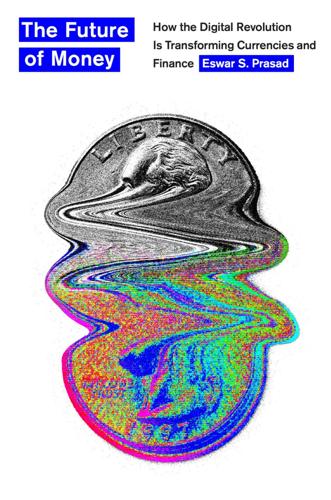
The Future of Money: How the Digital Revolution Is Transforming Currencies and Finance
by
Eswar S. Prasad
Published 27 Sep 2021
Wholesale Payments Wholesale payments between banks and other financial institutions are equally important to the functioning of a financial system. When customers of two institutions want to conduct transactions with one another, money has to move efficiently between those institutions. Most countries now operate a real-time gross settlement system (RTGS), usually managed by the national central bank, for interbank transfers of funds related to large-value transactions. Each transaction is handled individually and settled immediately—in real time—and on a gross basis, which means there is no netting out of multiple transactions between one financial institution and another.
…
(the preceding day) to 6:30 p.m. Eastern time. In 2020, it handled over 180 million transactions, with a value exceeding $800 trillion. In Britain, the Bank of England manages the Clearing House Automated Payment System (CHAPS). In the eurozone, the European Central Bank manages TARGET2 (Trans-European Automated Real-Time Gross Settlement Express Transfer system 2) for processing large-value payments across the entire zone. Many EMEs such as China and India have their own RTGSs as well. Some countries operate more than one wholesale payment system. The United States, for instance, has a second, privately managed wholesale payment system, called the Clearing House Interbank Payments System (CHIPS).
…
Electronic balances held by commercial banks (and, occasionally, other financial institutions) at central banks, known as reserves, are used to facilitate payment clearing and settlement through interbank payment systems managed by a central bank. When a customer of one bank makes a payment to a customer of another bank, money needs to be transferred from a deposit account in the first bank to a deposit account in the second one. Real-time gross settlement systems (RTGSs) are used to settle large-value transactions. Smaller transactions, by contrast, are generally settled on a net deferred basis. There is normally a large volume of such transactions running in both directions between banks and also across multiple banks, so at the end of the day there is a smaller net amount that needs to be transferred between banks.

The Blockchain Alternative: Rethinking Macroeconomic Policy and Economic Theory
by
Kariappa Bheemaiah
Published 26 Feb 2017
The essential problem in moving funds from country A to country B is the network of bilateral relationships [that exist]—and that doesn’t create transparency or predictability. It presents a very complex, costly, and cumbersome process [to move money around the world]. And we think there is a better way to address that” (PYMNTS, 2015). *SWIFT: Society for Worldwide Interbank Financial Telecommunication **RTGS: Real Time Gross Settlement Using the Skeleton Keys What the condensed insights in Sidebars 2-2 and 2-3 provide is the evidence that the financial ecosystem is being transformed and fragmented by actors and technologies that are exogenous to the traditional financial sector. Mark Carney’s statements about FinTech changing the nature of money and central banking thus hold sway as the fragmentation is happening at every level of this sector.
…
The payments industry is facing a similar conundrum as lending services, with the sector witnessing dramatic technological changes over the past few years, notably with the Blockchain. These changes reflect the altering needs of households and companies, and new payment providers have stepped in to address these needs. In a way, regulators have been more responsible in this arena and the recent launch of institutional networks such as CHAPS, the ACH network, and the Real Time Gross Settlement (RTGS) system , which currently transfer immense amounts each day (in the UK, RTGS settles around £500 Billion between banks every day—that’s almost a third of the UK’s annual GDP), shows how institutions have been able to adapt. The growth of payment API’s and the rise of mobile banking (e.g., Atom Bank), has enabled non-bank entities to deliver better services using the payments infrastructure, and allowed these providers to grow without building an extensive network.
…
Payment protection insurance (PPI) Peer-to-peer (P2P) Personal identification number (PIN) Polycoin Popperian falsifiability Public Company Accounting Oversight Board (PCAOB) Public-key certificate (PKC) Public-key infrastructure (PKI) Q Quantitative easing (QE) Quantitative model R R3 CORDA™ Rational expectations Rational expectations structural models Rational expectations theory (RET) Rational expectations theory (RMT) RBCmodels SeeReal Business Cycle (RBC) models Reaganomics Real Business Cycle (RBC) models Real Time Gross Settlement (RTGS) system Regular laws Ripple protocol S Santa Fe artificial stock market model Sarbanes-Oxley Act (SOX) Scalability SecureKey Concierge Seigniorage Shadow banking and systemic risk commercial banks definition dynamic stochastic general equilibrium models economic flexibility EMH and RET financial markets and monetary policy growth of financial products macroeconomic theories non-bank channels securitization trades Sharding Blockchain FinTech transformation global Fintech financing activity private sector ShoCard SIGEmodels SeeSticky Information General Equilibrium (SIGE) models Skill-biased technological change (SBTC) SkuChain Software as a service (SaaS) Sticky Information General Equilibrium (SIGE) models SWIFT network Systemically important financial institutions (SIFI) System identification number (SIN) T Tax evasion Tech-led firms Technology and invention accelerating consilience of technology blockchain combinatorial evolution complexity EDVAC equilibrium and rational expectations Konratiev waves Moore’s law and Wright’s law Popperian scientific method punch cards socialization specialised operations technological change Technology and invention socialization and complexity specialisation, diversity and ubiquity The Chicago Plan advantages benefits commercial banks debt feature existing debt fractional banking system monetary policies money principles and assumptions reduce private and public debt levels zero bound problem Too Big to Fail (TBTF) Bandits’ Club banking innovations CDS market derivative instruments endingTBTF approaches banking industry Dodd Frank Act goals and implementations innovative process Kashkari, Neel Living Will Review process optimal level questions systemically important financial institutions financial history fragmentation Gramm-Leach-Bliley financial modernization act ideological kidnapping macroeconomic models McFadden Act PPI process of technological innovations Trade finance automation banks and clients Blockchain capitalistic markets financial institutions limitations R3 CORDA™ regulators and policy makers supply chain management SWIFT network Wilson, Lamar Traditional structural models Tradle Transactional cost theory (TCT) Trunomi TUPAS U Unique Identification Authority of India (UIDAI) acts Universal Basic Income (UBI) U.S.

Broken Markets: A User's Guide to the Post-Finance Economy
by
Kevin Mellyn
Published 18 Jun 2012
eBook <www.wowebook.com> The War Against Settlement Risk The story of central bank intervention in shoring up the plumbing of the interbank settlement system starts with the discovery of Herstatt risk and is ongoing. The result was that the Bank for International Settlements (BIS), the club of leading central banks, in Basel formed a standing Committee of Payment and Settlement Systems (the CPSS) that in time devised a global standard for interbank payment systems, called Real Time Gross Settlement (RTGS). RTGS has mostly replaced the ancient clearinghouse practice of netting payments to achieve the smallest possible cash settlement. To do RTGS, a system needs to make each individual payment final and irrevocable, something that requires the use of central bank money and some way of using a combination of timing, periodic netting, and collateralized credit to keep the payments to and from participants flowing.
…
eBook <www.wowebook.com> 170 Index Global whirlwinds (continued) economic primacy, 113 European banking crisis ECB, 102–103 federal funds market, 102 Federal Reserve, 103 global money market, 102 interbank market, 101 interbank-lending market, 102 interest rate and currency risks, 101 investment-banking industry, 101 recession, 103 short-and medium-term credit, 101 short-term funding and liquidity, 101 sovereign risk, 102 steroids, 103 globalization, 113 global money pump, 103–105 global trade, zero-sum game ants and grasshoppers, 96 cheap TV deal, 94–95 Chinese Central Bank, 94 currency manipulation, 95–96 multilateral trade, 94 political demagoguery, 94 hegemon, 113–116 sustainable development, 112 technology vs. friction, 105–106 US global economic leadership, 112 US losing clout, 111–112 war, settlement risk, 108–109 Western decline acceleration, 113 Government-sponsored enterprises (GSEs), 17 Graham-Leach-Bliley Act, 36 Great Depression, 5, 44, 61 Great Moderation, 16–18, 21, 61 “Green” economy, 85 Growth-killing austerity, 111 H Home equity lines of credit (HELOCs), 16 I Industrial Revolution, 77 Infinite customization, 68 J Joint-stock banking, 63, 76 L Laissez-faire economy, 84–86 Liberal arts, 132 Life after finance, 75 credit-driven economy, 76–77 death knell, consumer credit American optimism, 90 big data, 90 entrepreneurs starvation, 91–92 loan factories, 90 per-account/per-transaction, 90 securitization, 90 unbanking, 91 financial repression Bretton Woods system, 79 capital exports and foreignexchange transactions, 79 captive domestic audience, 79 debt restructuring, 78 GDP, 79 government banks ownership, 79 industrial policy, 86 monopolies, 86 negative real interest rates, 78, 79 prudential regulation, 79 rules, 80 subsidized green energy, 86 tax raising and lowering, 81–82 World War II, 79 Government expenditure, 75–76 low interest rates, 77–78 political direction, credit and investment formal taxation, 82 government-run utility, 83 Japanese banks, 83 laissez-faire economy myth, 84–86 Index market-driven banking system, 83 winners and losers, 83–84 risky business amalgamation, 88 coincidence, 88 competition, 89–90 joint-stock banks, 87 often-contradictory rules and requirements, 88 private partnerships, 87 separation of functions, 87 shareholder-owned banks, 87 small-town banks, 87 Life-line banking, 70 R Liquidity trap, 72 Ring fencing, 88 London Interbank Offered Rate (LIBOR), 102 Rules-based regulation, 59, 61 M S “Market-centric” financial system, 110 Real Time Gross Settlement (RTGS), 108 Regulation process “Anglo-Saxon” world, 36 balance sheets and trading desks, 35 definition, 36 finance deregulation, 35–36 Graham-Leach-Bliley Act, 36 Triple A–rated bonds, 37 “ultra-safe” money market mutual fund, 37 Regulatory arbitrage, 61 Resolution Trust Corporation (RTC), 31 Savings-and-loan (S&L) industry, 28, 30 Mass-market retail banking, 66 Securities and Exchange Commission (SEC) rules, 33 McKinsey Global Institute (MGI), 110 S&L industry.See Savings-and-loan industry Micro-regulation, 92 Ministry of International Trade and Industry (MITI), 83 Society for Worldwide Interbank Financial Telecommunications (SWIFT), 107 Moral hazard, 18 Straight-through procession, 107 N National Bank Act, 49 National Bureau of Economic Research (NBER), 78 O Outsourcing, 13 P Personal Consumption Expenditure (PCE), 90 Price discovery, 104 Principles-based regulation, 59 Printing money, 78 Professional/proprietary trading, 12 Subprime mortgage market, 66 T The Dodd-Frank Act, 49 Trillion-pound banking groups, 60 Troubled Asset Relief Program (TARP), 39 U US Federal Reserve, 6 V Volcker rule, 88 W Working capital, 11 171 Broken Markets A User’s Guide to the Post-Finance Economy Kevin Mellyn Broken Markets: A User’s Guide to the Post-Finance Economy Copyright © 2012 by Kevin Mellyn All rights reserved.
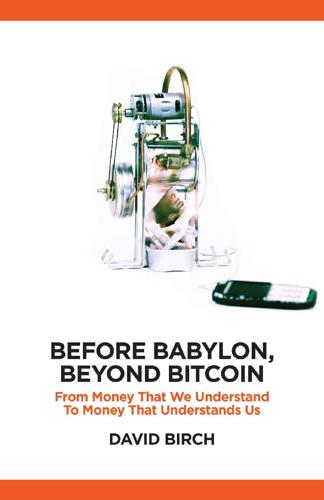
Before Babylon, Beyond Bitcoin: From Money That We Understand to Money That Understands Us (Perspectives)
by
David Birch
Published 14 Jun 2017
Such high-value interbank payments are absolutely crucial to modern economies. The Bank of England’s role as a settlement agent emerged in the middle of the nineteenth century with the provision of settlement accounts for the commercial banking sector. Since 1996 these accounts have been held within the Bank’s Real Time Gross Settlement (RTGS) system, which provides for real-time posting, with finality and irrevocability, of debit and credit entries to participants accounts (see the Bank’s guide online at http://bit.ly/2miUEzL). This system, which is an element of vital national infrastructure, is used for several purposes.
…
I will use the example of the Bank of England to do this because its Deputy Governor for Markets and Banking, Minouche Shafik, gave a speech concerning the review of payment systems early in 2016 that mentioned shared ledger technology (Shafik 2016), saying that instead of settlement occurring across the books of a single central authority (such as a central bank, clearing house or custodian), strong cryptographic and verification algorithms allow everyone in a [ledger] to have a copy of the ledger and give distributed authority for managing and updating that ledger to a much wider group of agents. But why would the Bank of England want to do this? Why would the market participants? Shafik was talking in the context of the United Kingdom’s Real Time Gross Settlement (RTGS) system, as described earlier. A couple of years ago this vital piece of national infrastructure had a bit of a hiccough and went down. The situation was so serious that Mark Carney, the governor of the Bank of England, launched an independent review into what was the worst disruption of Britain’s banking payment system in seven years (the breakdown meant that the CHAPS payment system was down for more than nine hours; the bank was forced to start processing the most important payments manually).
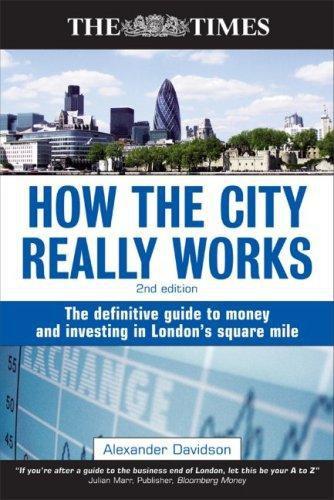
How the City Really Works: The Definitive Guide to Money and Investing in London's Square Mile
by
Alexander Davidson
Published 1 Apr 2008
Clients of Euroclear UK & Ireland, including stockbrokers, custodians, fund managers, market makers and all forms of intermediaries, each have an account with a settlement bank of their choice. Each settlement bank transfers cash payments on behalf of Euroclear UK & Ireland clients to and from the other settlement banks during each day. These cash transfers are made using CHAPS (Clearing House Automated Payments System) for payments in euros and the Bank of England’s RTGS (Real Time Gross Settlement) system for sterling. At the end of each settlement cycle, CREST will notify the Bank of England’s RTGS system of the inter-bank payments that took place. RTGS will release earmarked funds that were not used and it will allow the settlement banks to rebalance their liquidity before they restart the process.
…
Index 419 fraud 204 9/11 terrorist attacks 31, 218, 242, 243, 254, 257 Abbey National 22 ABN AMRO 103 accounting and governance 232–38 scandals 232 Accounting Standards Board (ASB) 236 administration 17 Allianz 207 Alternative Investment Market (AIM) 44–45, 131, 183, 238 Amaranth Advisors 170 analysts 172–78 fundamental 172–74 others 177–78 Spitzer impact 174–75 technical 175–77 anti-fraud agencies Assets Recovery Agency 211–13 City of London Police 209 Financial Services Authority 208 Financial Crime and Intelligence Division 208 Insurance Fraud Bureau 209 Insurance Fraud Investigators Group 209 International Association of Insurance Fraud Agencies 207, 210, 218 National Criminal Intelligence Service 210 Serious Fraud Office 213–15 Serious Organised Crime Agency 210–11 asset finance 24–25 Association of Investment Companies 167 backwardation 101 bad debt, collection of 26–28 Banco Santander Central Hispano 22 Bank for International Settlements (BIS) 17, 27, 85, 98, 114 bank guarantee 23 Bank of Credit and Commerce International (BCCI) 10, 214 Bank of England 6, 10–17 Court of the 11 credit risk warning 98 framework for sterling money markets 81 Governor 11, 13, 14 history 10, 15–16 Inflation Report 14 inflation targeting 12–13 interest rates and 12 international liaison 17 lender of last resort 15–17 Market Abuse Directive (MAD) 16 monetary policy and 12–15 Monetary Policy Committee (MPC) 13–14 Open-market operations 15, 82 repo rate 12, 15 role 11–12 RTGS (Real Time Gross Settlement) 143 statutory immunity 11 supervisory role 11 Bank of England Act 1988 11, 12 Bank of England Quarterly Model (BEQM) 14 Banking Act 1933 see Glass-Steagall Act banks commercial 5 investment 5 Barclays Bank 20 Barings 11, 15, 68, 186, 299 Barlow Clowes case 214 Barron’s 99 base rate see repo rate Basel Committee for Banking Supervision (BCBS) 27–28 ____________________________________________________ INDEX 303 Basel I 27 Basel II 27–28, 56 Bear Stearns 95, 97 BearingPoint 97 bill of exchange 26 Bingham, Lord Justice 10–11 Blue Arrow trial 214 BNP Paribas 145, 150 bond issues see credit products book runners 51, 92 Borsa Italiana 8, 139 bps 90 British Bankers’ Association 20, 96, 97 building societies 22–23 demutualisation 22 Building Societies Association 22 Capital Asset Pricing Model (CAPM) see discounted cash flow analysis capital gains tax 73, 75, 163, 168 capital raising markets 42–46 mergers and acquisitions (M&A) 56–58 see also flotation, bond issues Capital Requirements Directive 28, 94 central securities depository (CSD) 145 international (ICSD) 145 Central Warrants Trading Service 73 Chancellor of the Exchequer 12, 13, 229 Chicago Mercantile Exchange 65 Citigroup 136, 145, 150 City of London 4–9 Big Bang 7 definition 4 employment in 8–9 financial markets 5 geography 4–5 history 6–7 services offered 4 world leader 5–6 clearing 140, 141–42 Clearing House Automated Payment System (CHAPS) 143 Clearstream Banking Luxembourg 92, 145 commercial banking 5, 18–28 bad loans and capital adequacy 26–28 banking cards 21 building societies 22–23 credit collection 25–26 finance raising 23–25 history 18–19 overdrafts 23 role today 19–21 commodities market 99–109 exchange-traded commodities 101 fluctuations 100 futures 100 hard commodities energy 102 non-ferrous metals 102–04 precious metal 104–06 soft commodities cocoa 107 coffee 106 sugar 107 Companies Act 2006 204, 223, 236 conflict of interests 7 consolidation 138–39 Consumer Price Index (CPI) 13 contango 101 Continuous Linked Settlement (CLS) 119 corporate governance 223–38 best practice 231 Cadbury Code 224 Combined Code 43, 225 compliance 230 definition 223 Directors’ Remuneration Report Regulations 226 EU developments 230 European auditing rules 234–35 Greenbury Committee 224–25 Higgs and Smith reports 227 International Financial Reporting Standards (IFRS) 237–38 Listing Rules 228–29 Model Code 229 Myners Report 229 OECD Principles 226 operating and financial review (OFR) 235– 36 revised Combined Code 227–28 Sarbanes–Oxley Act 233–34 Turnbull Report 225 credit cards 21 zero-per-cent cards 21 credit collection 25–26 factoring and invoice discounting 26 trade finance 25–26 credit derivatives 96–97 back office issues 97 credit default swap (CDS) 96–97 credit products asset-backed securities 94 bonds 90–91 collateralised debt obligations 94–95 collateralised loan obligation 95 covered bonds 93 equity convertibles 93 international debt securities 92–93 304 INDEX ____________________________________________________ junk bonds 91 zero-coupon bonds 93 credit rating agencies 91 Credit Suisse 5, 136, 193 CREST system 141, 142–44 dark liquidity pools 138 Debt Management Office 82, 86 Department of Trade and Industry (DTI) 235, 251, 282 derivatives 60–77 asset classes 60 bilateral settlement 66 cash and 60–61 central counterparty clearing 65–66 contracts for difference 76–77, 129 covered warrants 72–73 futures 71–72 hedging and speculation 67 on-exchange vs OTC derivatives 63–65 options 69–71 Black-Scholes model 70 call option 70 equity option 70–71 index options 71 put option 70 problems and fraud 67–68 retail investors and 69–77 spread betting 73–75 transactions forward (future) 61–62 option 62 spot 61 swap 62–63 useful websites 75 Deutsche Bank 136 Deutsche Börse 64, 138 discounted cash flow analysis (DCF) 39 dividend 29 domestic financial services complaint and compensation 279–80 financial advisors 277–78 Insurance Mediation Directive 278–79 investments with life insurance 275–76 life insurance term 275 whole-of-life 274–75 NEWICOB 279 property and mortgages 273–74 protection products 275 savings products 276–77 Dow theory 175 easyJet 67 EDX London 66 Egg 20, 21 Elliott Wave Theory 176 Enron 67, 114, 186, 232, 233 enterprise investment schemes 167–68 Equiduct 133–34, 137 Equitable Life 282 equities 29–35 market indices 32–33 market influencers 40–41 nominee accounts 31 shares 29–32 stockbrokers 33–34 valuation 35–41 equity transparency 64 Eurex 64, 65 Euro Overnight Index Average (EURONIA) 85 euro, the 17, 115 Eurobond 6, 92 Euroclear Bank 92, 146, 148–49 Euronext.liffe 5, 60, 65, 71 European Central Bank (ECB) 16, 17, 84, 148 European Central Counterparty (EuroCCP) 136 European Code of Conduct 146–47, 150 European Exchange Rate Mechanism 114 European Harmonised Index of Consumer Prices 13 European Union Capital Requirements Directive 199 Market Abuse Directive (MAD) 16, 196 Market in Financial Instruments Directive (MiFID) 64, 197–99 Money Laundering Directive 219 Prospectus Directive 196–97 Transparency Directive 197 exchange controls 6 expectation theory 172 Exxon Valdez 250 factoring see credit collection Factors and Discounters Association 26 Fair & Clear Group 145–46 Federal Deposit Insurance Corporation 17 Federation of European Securities Exchanges 137 Fighting Fraud Together 200–01 finance, raising 23–25 asset 24–25 committed 23 project finance 24 recourse loan 24 syndicated loan 23–24 uncommitted 23 Financial Action Task Force on Money Laundering (FATF) 217–18 financial communications 179–89 ____________________________________________________ INDEX 305 advertising 189 corporate information flow 185 primary information providers (PIPs) 185 investor relations 183–84 journalists 185–89 public relations 179–183 black PR’ 182–83 tipsters 187–89 City Slickers case 188–89 Financial Ombudsman Service (FOS) 165, 279–80 financial ratios 36–39 dividend cover 37 earnings per share (EPS) 36 EBITDA 38 enterprise multiple 38 gearing 38 net asset value (NAV) 38 price/earnings (P/E) 37 price-to-sales ratio 37 return on capital employed (ROCE) 38 see also discounted cash flow analysis Financial Reporting Council (FRC) 224, 228, 234, 236 Financial Services Act 1986 191–92 Financial Services Action Plan 8, 195 Financial Services and Markets Act 2001 192 Financial Services and Markets Tribunal 94 Financial Services Authority (FSA) 5, 8, 31, 44, 67, 94, 97, 103, 171, 189, 192–99 competition review 132 insurance industry 240 money laundering and 219 objectives 192 regulatory role 192–95 powers 193 principles-based 194–95 Financial Services Compensation Scheme (FSCS) 17, 165, 280 Financial Services Modernisation Act 19 financial services regulation 190–99 see also Financial Services Authority Financial Times 9, 298 First Direct 20 flipping 53 flotation beauty parade 51 book build 52 early secondary market trading 53 grey market 52, 74 initial public offering (IPO) 47–53 pre-marketing 51–52 pricing 52–53 specialist types of share issue accelerated book build 54 bought deal 54 deeply discounted rights issue 55 introduction 55 placing 55 placing and open offer 55 rights issues 54–55 underwriting 52 foreign exchange 109–120 brokers 113 dealers 113 default risk 119 electronic trading 117 exchange rate 115 ICAP Knowledge Centre 120 investors 113–14 transaction types derivatives 116–17 spot market 115–16 Foreign Exchange Joint Standing Committee 112 forward rate agreement 85 fraud 200–15 advanced fee frauds 204–05 boiler rooms 201–04 Regulation S 202 future regulation 215 identity theft 205–06 insurance fraud 206–08 see also anti-fraud agencies Fraud Act 2006 200 FTSE 100 32, 36, 58, 122, 189, 227, 233 FTSE 250 32, 122 FTSE All-Share Index 32, 122 FTSE Group 131 FTSE SmallCap Index 32 FTSE Sterling Corporate Bond Index 33 Futures and Options Association 131 Generally Accepted Accounting Principles (GAAP) 237, 257 gilts 33, 86–88 Giovanni Group 146 Glass-Steagall Act 7, 19 Global Bond Market Forum 64 Goldman Sachs 136 government bonds see gilts Guinness case 214 Halifax Bank 20 hedge funds 8, 77, 97, 156–57 derivatives-based arbitrage 156 fixed-income arbitrage 157 Hemscott 35 HM Revenue and Customs 55, 211 HSBC 20, 103 Hurricane Hugo 250 306 INDEX ____________________________________________________ Hurricane Katrina 2, 67, 242 ICE Futures 5, 66, 102 Individual Capital Adequacy Standards (ICAS) 244 inflation 12–14 cost-push 12 definition 12 demand-pull 12 quarterly Inflation Report 14 initial public offering (IPO) 47–53 institutional investors 155–58 fund managers 155–56 hedge fund managers 156–57 insurance companies 157 pension funds 158 insurance industry London and 240 market 239–40 protection and indemnity associations 241 reform 245 regulation 243 contingent commissions 243 contract certainty 243 ICAS and Solvency II 244–45 types 240–41 underwriting process 241–42 see also Lloyd’s of London, reinsurance Intercontinental Exchange 5 interest equalisation tax 6 interest rate products debt securities 82–83, 92–93 bill of exchange 83 certificate of deposit 83 debt instrument 83 euro bill 82 floating rate note 83 local authority bill 83 T-bills 82 derivatives 85 forward rate agreements (FRAs) 85–86 government bonds (gilts) 86–89 money markets 81–82 repos 84 International Financial Reporting Standards (IFRS) 58, 86, 173, 237–38 International Financial Services London (IFSL) 5, 64, 86, 92, 112 International Monetary Fund 17 International Securities Exchange 138 International Swap Dealers Association 63 International Swaps and Derivatives Association 63 International Underwriting Association (IUA) 240 investment banking 5, 47–59 mergers and acquisitions (M&A) 56–58 see also capital raising investment companies 164–69 real estate 169 split capital 166–67 venture capital 167–68 investment funds 159–64 charges 163 investment strategy 164 fund of funds scheme 164 manager-of-managers scheme 164 open-ended investment companies (OEICs) 159 selection criteria 163 total expense ratio (TER) 164 unit trusts 159 Investment Management Association 156 Investment Management Regulatory Organisation 11 Johnson Matthey Bankers Limited 15–16 Joint Money Laundering Steering Group 221 KAS Bank 145 LCH.Clearnet Limited 66, 140 letter of credit (LOC) 23, 25–26 liability-driven investment 158 Listing Rules 43, 167, 173, 225, 228–29 Lloyd’s of London 8, 246–59 capital backing 249 chain of security 252–255 Central Fund 253 Corporation of Lloyd’s 248–49, 253 Equitas Reinsurance Ltd 251, 252, 255–56 Franchise Performance Directorate 256 future 258–59 Hardship Committee 251 history 246–47, 250–52 international licenses 258 Lioncover 252, 256 Member’s Agent Pooling Arrangement (MAPA) 249, 251 Names 248, one-year accounting 257 regulation 257 solvency ratio 255 syndicate capacity 249–50 syndicates 27 loans 23–24 recourse loan 24 syndicated loan 23–24 London Interbank Offered Rate (LIBOR) 74, 76 ____________________________________________________ INDEX 307 London Stock Exchange (LSE) 7, 8, 22, 29, 32, 64 Alternative Investment Market (AIM) 32 Main Market 42–43, 55 statistics 41 trading facilities 122–27 market makers 125–27 SETSmm 122, 123, 124 SETSqx 124 Stock Exchange Electronic Trading Service (SETS) 122–25 TradElect 124–25 users 127–29 Louvre Accord 114 Markets in Financial Instruments Directive (MiFID) 64, 121, 124, 125, 130, 144, 197–99, 277 best execution policy 130–31 Maxwell, Robert 186, 214, 282 mergers and acquisitions 56–58 current speculation 57–58 disclosure and regulation 58–59 Panel on Takeovers and Mergers 57 ‘white knight’ 57 ‘white squire’ 57 Merrill Lynch 136, 174, 186, 254 money laundering 216–22 Egmont Group 218 hawala system 217 know your client (KYC) 217, 218 size of the problem 222 three stages of laundering 216 Morgan Stanley 5, 136 multilateral trading facilities Chi-X 134–35, 141 Project Turquoise 136, 141 Munich Re 207 Nasdaq 124, 138 National Strategy for Financial Capability 269 National Westminster Bank 20 Nationwide Building Society 221 net operating cash flow (NOCF) see discounted cash flow analysis New York Federal Reserve Bank (Fed) 16 Nomads 45 normal market share (NMS) 132–33 Northern Rock 16 Nymex Europe 102 NYSE Euronext 124, 138, 145 options see derivatives Oxera 52 Parmalat 67, 232 pensions alternatively secured pension 290 annuities 288–89 occupational pension final salary scheme 285–86 money purchase scheme 286 personal account 287 personal pension self-invested personal pension 288 stakeholder pension 288 state pension 283 unsecured pension 289–90 Pensions Act 2007 283 phishing 200 Piper Alpha oil disaster 250 PLUS Markets Group 32, 45–46 as alternative to LSE 45–46, 131–33 deal with OMX 132 relationship to Ofex 46 pooled investments exchange-traded funds (ETF) 169 hedge funds 169–71 see also investment companies, investment funds post-trade services 140–50 clearing 140, 141–42 safekeeping and custody 143–44 registrar services 144 settlement 140, 142–43 real-time process 142 Proceeds of Crime Act 2003 (POCA) 211, 219, 220–21 Professional Securities Market 43–44 Prudential 20 purchasing power parity 118–19 reinsurance 260–68 cat bonds 264–65 dispute resolution 268 doctrines 263 financial reinsurance 263–64 incurred but not reported (IBNR) claims insurance securitisation 265 non-proportional 261 offshore requirements 267 proportional 261 Reinsurance Directive 266–67 retrocession 262 types of contract facultative 262 treaty 262 retail banking 20 retail investors 151–155 Retail Prices Index (RPI) 13, 87 264 308 INDEX ____________________________________________________ Retail Service Provider (RSP) network Reuters 35 Royal Bank of Scotland 20, 79, 221 73 Sarbanes–Oxley Act 233–34 securities 5, 29 Securities and Futures Authority 11 self-regulatory organisations (SROs) 192 Serious Crime Bill 213 settlement 11, 31, 140, 142–43 shareholder, rights of 29 shares investment in 29–32 nominee accounts 31 valuation 35–39 ratios 36–39 see also flotation short selling 31–32, 73, 100, 157 Society for Worldwide Interbank Financial Telecommunications (SWIFT) 119 Solvency II 244–245 Soros, George 114, 115 Specialist Fund Market 44 ‘square mile’ 4 stamp duty 72, 75, 166 Sterling Overnight Index Average (SONIA) 85 Stock Exchange Automated Quotation System (SEAQ) 7, 121, 126 Stock Exchange Electronic Trading Service (SETS) see Lloyd’s of London stock market 29–33 stockbrokers 33–34 advisory 33 discretionary 33–34 execution-only 34 stocks see shares sub-prime mortgage crisis 16, 89, 94, 274 superequivalence 43 suspicious activity reports (SARs) 212, 219–22 swaps market 7 interest rates 56 swaptions 68 systematic internalisers (SI) 137–38 Target2-Securities 147–48, 150 The Times 35, 53, 291 share price tables 36–37, 40 tip sheets 33 trading platforms, electronic 80, 97, 113, 117 tranche trading 123 Treasury Select Committee 14 trend theory 175–76 UBS Warburg 103, 136 UK Listing Authority 44 Undertakings for Collective Investments in Transferable Securities (UCITS) 156 United Capital Asset Management 95 value at risk (VAR) virtual banks 20 virt-x 140 67–68 weighted-average cost of capital (WACC) see discounted cash flow analysis wholesale banking 20 wholesale markets 78–80 banks 78–79 interdealer brokers 79–80 investors 79 Woolwich Bank 20 WorldCom 67, 232 Index of Advertisers Aberdeen Asset Management PLC xiii–xv Birkbeck University of London xl–xlii BPP xliv–xlvi Brewin Dolphin Investment Banking 48–50 Cass Business School xxi–xxiv Cater Allen Private Bank 180–81 CB Richard Ellis Ltd 270–71 CDP xlviii–l Charles Schwab UK Ltd lvi–lviii City Jet Ltd x–xii The City of London inside front cover EBS Dealing Resource International 110–11 Edelman xx ESCP-EAP European School of Management vi ICAS (The Inst. of Chartered Accountants of Scotland) xxx JP Morgan Asset Management 160–62 London Business School xvi–xviii London City Airport vii–viii Morgan Lewis xxix Securities & Investments Institute ii The Share Centre 30, 152–54 Smithfield Bar and Grill lii–liv TD Waterhouse xxxii–xxxiv University of East London xxxvi–xxxviii
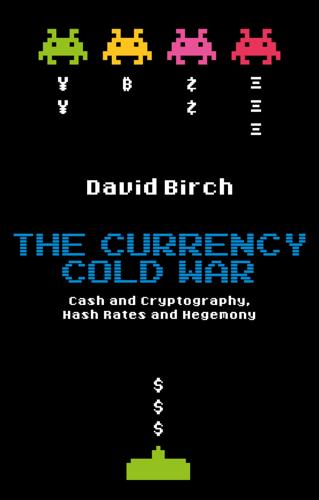
The Currency Cold War: Cash and Cryptography, Hash Rates and Hegemony
by
David G. W. Birch
Published 14 Apr 2020
In the case of Ecuador, the lack of transparency, and therefore the lack of faith from the populace, led to the system being abandoned in December 2017; this was when Ecuador’s National Assembly decommissioned the system and opened the market to mobile payment alternatives from the country’s private commercial banks and savings institutions (White 2018). Zimbabwe provides a similar lesson. At the beginning of 2019, the real-time gross settlement (RTGS) dollar (which was issued against US dollars held in a bank account) was adopted as a Zimbabwean currency, alongside ‘bond notes’ and foreign currencies. By the middle of that year, the use of foreign currencies was outlawed for most transactions. Since the banks lacked the US dollar reserves needed to maintain the convertibility of the RTGS dollar, the value of these digital dollars started to collapse, dropping from 2.5 to the US dollar to 25 to the US dollar on the black market at the end of 2019.

Stigum's Money Market, 4E
by
Marcia Stigum
and
Anthony Crescenzi
Published 9 Feb 2007
taking a view: A London expression for forming an opinion concerning where interest rates are going and acting on it. TANs: Tax anticipation notes issued by states or municipalities to finance current operations in anticipation of future tax receipts. TARGET (Trans-European Automated Real-Time Gross settlement Express Transfer system): A payment system comprising 15 national real-time gross settlement systems (RTGS) and the European Central Bank (ECB) payment mechanism (EPM). The national RTGS systems and the EPM are interconnected by common procedures, so that TARGET gives access to almost 1,200 direct participants and more than 48,000 credit institutions (including branches and subs) for the real-time processing of cross-border transfers throughout the European Union.
…
Fedwire: An electronic payments system linking member banks to the Fed, used for making interbank payments of fed funds and for making deliveries of and payments for Treasury and agency securities. The Fed provides these services through its Fedwire Funds Service, the Fedwire Securities Service, and the National Settlements Service. The Fedwire Funds Service is a real-time gross settlement system that serves over 9,500 participants. figuring the tail: Calculating the yield at which a future money market instrument (one available some period hence) is purchased when that future security is created by buying an existing instrument and financing the initial portion of life with a term repo.
…
ratings: An evaluation given by Moody’s, Standard & Poor’s, Fitch, or other rating services of a security’s creditworthiness. real market: The bid and offer prices at which a dealer could do transactions in relatively large size. Quotes in the brokers market may reflect not the real market but pictures painted by dealers playing trading games. real-time gross settlement (RTGS) system: A settlement system in which processing and settlement take place on an order-by-order basis (without netting) in real time (continuously). “red” futures contract month: A futures contract in a month more than 12 months away; for example, in November, the Dec (pronounced Deess) Eurodollar contract would mature 1 month later; the red Dec contract, 13 months later.
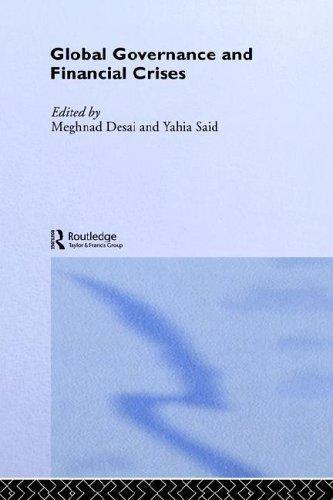
Global Governance and Financial Crises
by
Meghnad Desai
and
Yahia Said
Published 12 Nov 2003
Within countries inter-bank settlements are daily proceeded in central bank money after multilateral clearing of net bank exposure. Keynes thought that the same logic could be forwarded to international settlements, if a third stage was built in linking national banking systems together as it is now done in European Monetary Union (EMU) via Trans-European Automated Real Time Gross Settlement Express Transfer (TARGET) and the Europe Central Banking System (ECBS). Keynes’s proposal implied an international standard to express assets and liabilities, as well as an international institution acting as a world central bank. The liability of this institution would be the exclusive international reserve asset for national central banks.

The City
by
Tony Norfield
Mike Hall has an interesting critique of the Marxist literature for ignoring bank credit creation in his essay ‘On the Creation of Money and the Accumulation of Bank-Capital’, Capital & Class, 48, Autumn 1992. 8There are often several ways of organising transfers of funds between accounts, but this is the basic mechanism. 9The Bank of England has produced a very helpful explanation of credit creation in the modern economy, one that notes how economics textbooks are misleading when they give the example of a bank lending out 90 per cent of an original deposit and keeping back 10 per cent as a reserve, etc. BoE, ‘Money Creation in the Modern Economy’, Bank of England Quarterly Bulletin, Q1, 2014. Another BoE article describes the different interbank payments systems: ‘The Bank of England’s Real-Time Gross Settlement infrastructure’, Bank of England Quarterly Bulletin, Q3, 2012. 10On this point, see Chapter 8 especially. 11Marx, Capital, Volume 3, Chapter 29. 12It is also possible for some capitalists to get securities as a form of indirect payment for services to a company, as with some start-up ventures.
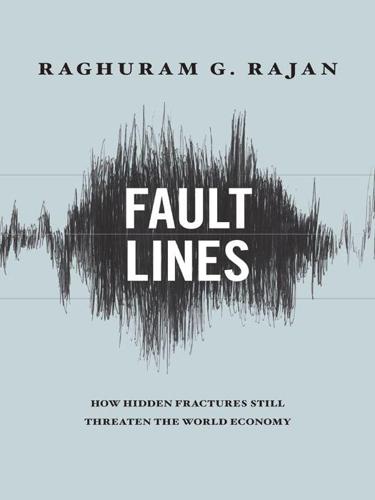
Fault Lines: How Hidden Fractures Still Threaten the World Economy
by
Raghuram Rajan
Published 24 May 2010
A well-diversified money-market fund invested in highly rated commercial paper and marked every day to market is almost as safe and should not experience the kinds of runs experienced by funds that were not marked to market during this crisis.20 Another important reason for insuring deposits was to ensure that the payment system would be relatively safe: unregulated, unsafe, uninsured entities could not pollute it and cause the system to freeze. But now that technological advances, such as real-time gross settlement payments, make it possible to protect the payment system from the failure of any payer, even this rationale is weak. Deposit insurance does help keep small, undiversified banks in business. To the extent that these small banks are important in making loans in the local community—to the local bakery or toy shop—they have some economic and social value.
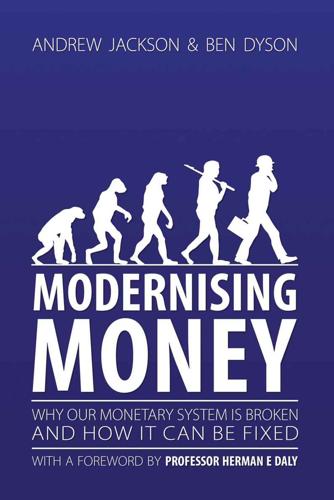
Modernising Money: Why Our Monetary System Is Broken and How It Can Be Fixed
by
Andrew Jackson (economist)
and
Ben Dyson (economist)
Published 15 Nov 2012
Retrieved from: http://www.timesonline.co.uk/tol/comment/columnists/article1294376.ece on 27.7.2011. Bank of England. (1999). The Transmission Mechanism of Monetary Policy. Bank of England. Bank of England. (2009). Payment Systems Oversight Report 2008. Bank of England. Bank of England. (2012). The Bank of England’s Real-Time Gross Settlement Infrastructure. Bank of England Quarterly Bulletin, 2012 Q3. Bank of England. Bank of England. (2012). The Red Book: The Framework for the Bank of England’s Operations in the Sterling Money Markets. Bank of England. Bannock, G. B. (1978). Dictionary of Economics. Harmondswort: Penguin Books.

Mastering Blockchain, Second Edition
by
Imran Bashir
Published 28 Mar 2018
This scheme works by combining individually mined chains on peers into a single network. The result is massive throughput capable of processing more than 10,000 transactions per second. The original research paper is available at http://kadena.io/docs/chainweb-v15.pdf. Ripple Introduced in 2012, Ripple is a currency exchange and real-time gross settlement system. In Ripple, the payments are settled without any waiting as opposed to traditional settlement networks, where it can take days for settlement. It has a native currency called Ripples (XRP). It also supports non-XRP payments. This system is considered similar to an old traditional money transfer mechanism known as Hawala.

The Shifts and the Shocks: What We've Learned--And Have Still to Learn--From the Financial Crisis
by
Martin Wolf
Published 24 Nov 2015
Zsolt Darvas, ‘Intra-Euro Rebalancing is Inevitable, but Insufficient’, Bruegel Policy Contribution Issue 2012/15, August 2012, www.bruegel.org, Table 1. 34. IMF, ‘Euro Area Policies: 2013 Article IV Consultation’, p. 8 and Box 2. 35. Merler and Pisani-Ferry, ‘Sudden Stops in the Euro Area’, Fig. 4 and p. 7. 36. TARGET stands for ‘Trans-European Automated Real-time Gross Settlement Express Transfer’. 37. Hans-Werner Sinn of CESifo, in Munich, has played an important role in bringing the implications of the imbalances in the TARGET 2 system to the world’s attention. See Hans-Werner Sinn and Timo Wollmershaeuser, ‘Target Loans, Current Account Balances and Capital Flows: The ECB’s Rescue Facility’, National Bureau of Economic Research Working Paper 17626, November 2011, www.nber.org. 38.
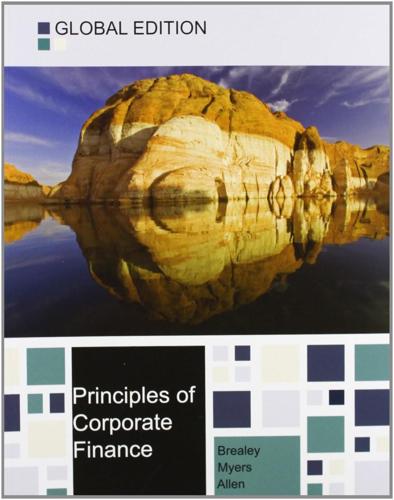
Principles of Corporate Finance
by
Richard A. Brealey
,
Stewart C. Myers
and
Franklin Allen
Published 15 Feb 2014
Rajan, “Trade Credit: Theories and Evidence,” Review of Financial Studies 10 (Fall 1997), pp. 661–692. 13For a discussion of the reasons for these international differences in payment methods, see “Retail Payments in Selected Countries: A Comparative Study,” Committee on Payment and Settlement Systems, Bank for International Settlements, Basel, Switzerland, September 1999. 14The Automated Clearing House also handles the growing number of check conversion transactions (see below) and nonrecurring transactions made by telephone or over the Internet. 15Fedwire is a real-time, gross settlement system, which means that each transaction over Fedwire is settled individually and immediately. With a net settlement system transactions are put into a pot and periodically netted off before being settled. CHIPS is an example of a net system that settles at frequent intervals. 16We discussed money-market funds in Section 17-3. 17To confuse things even more, dealers in the money market often quote rates as if there were only 360 days in a year.